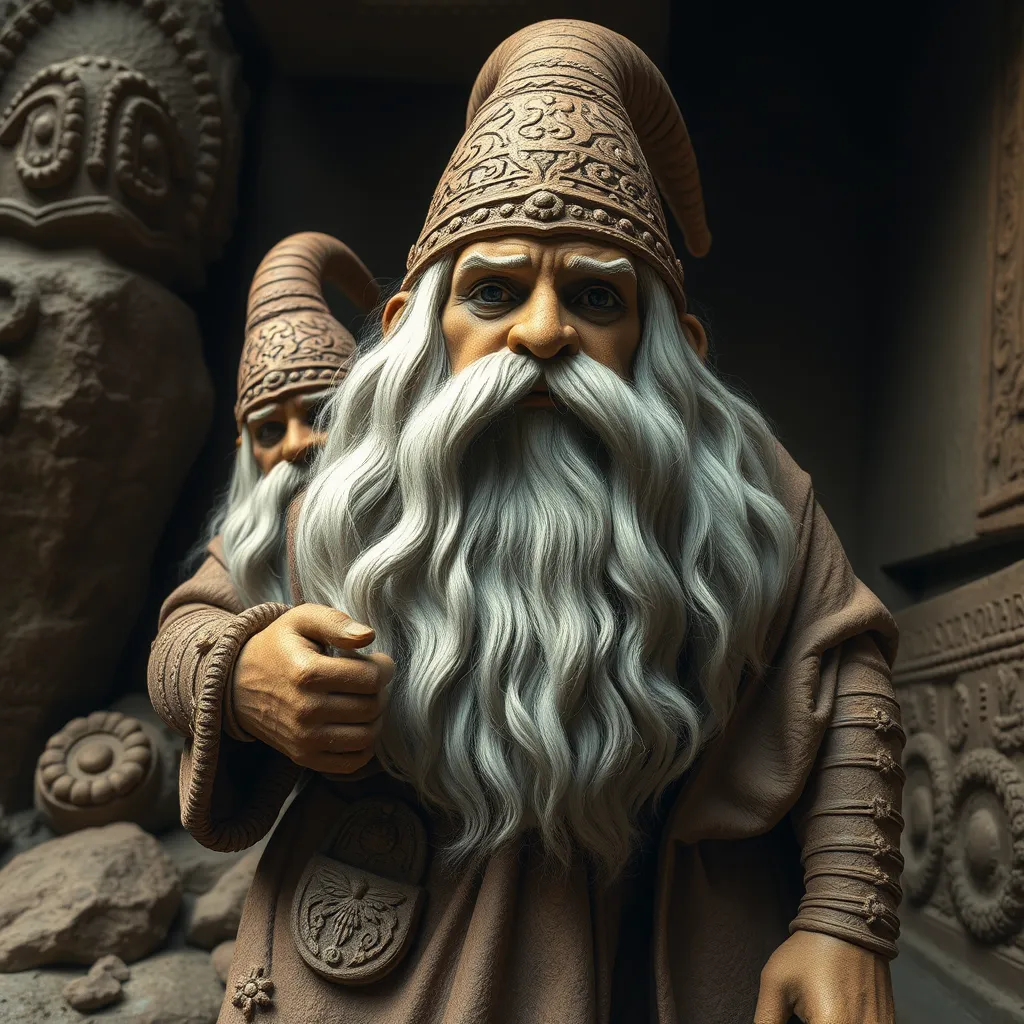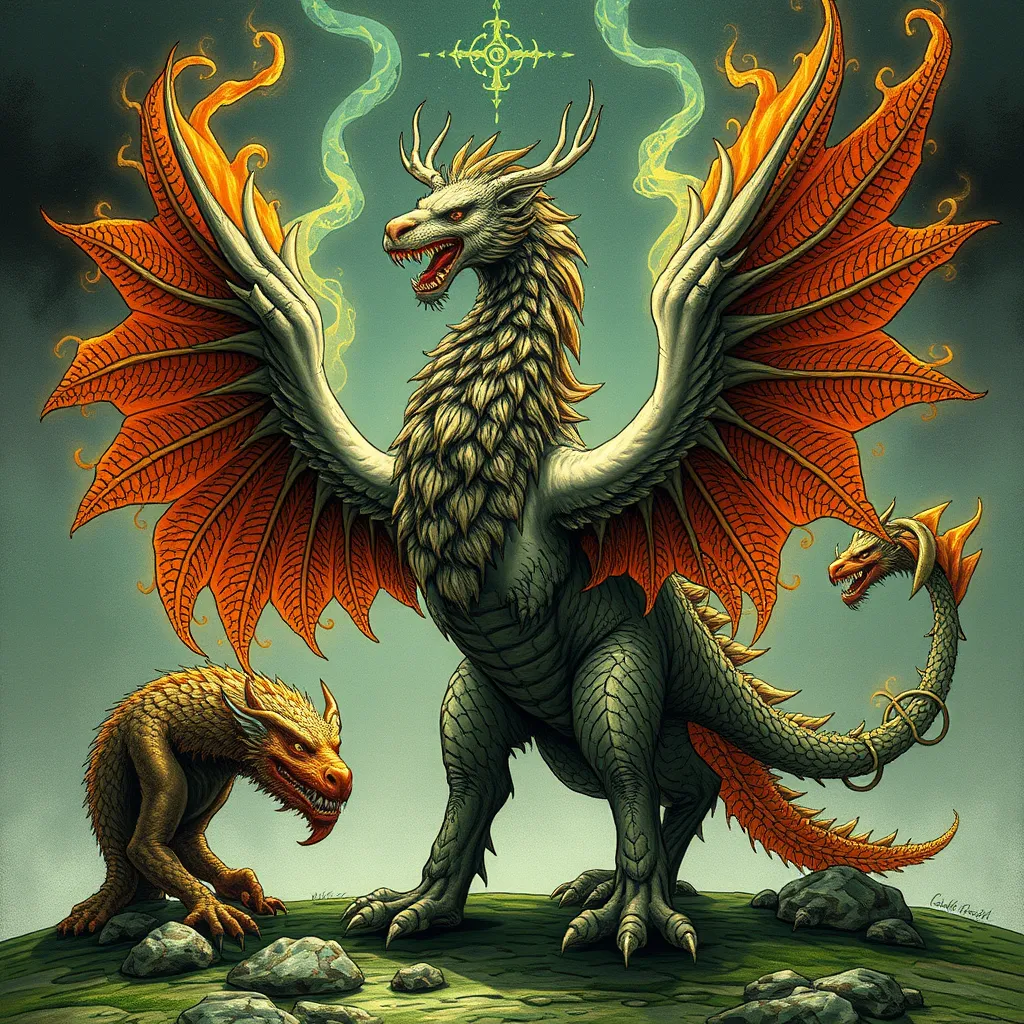The Camazotz Totem: Exploring the Power and Significance of the Bat God Symbol
I. Introduction
Camazotz, revered as the Bat God, occupies a significant role in Mesoamerican mythology, particularly within the ancient Mayan civilization. As a deity associated with night, death, and the underworld, Camazotz embodies a complex array of symbolic meanings that resonate through various cultural narratives. The bat, as a symbol, is deeply embedded in Mesoamerican culture, representing not only the nocturnal aspect of existence but also the cyclical nature of life and death.
This article aims to explore the historical context, symbolism, and contemporary relevance of the Camazotz totem, delving into its design, spiritual significance, and its place in modern society. Through this exploration, we will uncover the enduring power of the bat god symbol and its implications for understanding Mesoamerican spirituality and mythology.
II. Historical Context of Camazotz
The origins of Camazotz can be traced back to the rich tapestry of Mayan mythology. This deity was often depicted as a humanoid figure with bat-like features, embodying the dualities of fear and reverence. The presence of Camazotz in ancient texts, such as the Popol Vuh, highlights his role in various mythological narratives, especially those related to creation and the afterlife.
Depictions of Camazotz in artifacts, such as pottery and sculptures, reveal the intricate artistry of Mayan civilization. These representations often showcase his association with rituals surrounding death and resurrection, solidifying his position within the Mesoamerican pantheon as a powerful figure tied to transformation and the spiritual realm.
III. Symbolism of the Bat
The bat, as a creature of the night, carries a wealth of symbolism that extends beyond its physical form. In Mesoamerican cultures, bats are often associated with:
- Death: Bats are seen as harbingers of death, often linked to the underworld and the journey of the soul.
- Rebirth: The cyclical nature of life and death is emphasized through the bat’s nocturnal behavior and its ability to navigate darkness.
- Transformation: Bats are regarded as symbols of change, representing the transition between different states of existence.
Across various Mesoamerican societies, the cultural interpretations of bats reveal a common thread of reverence and fear. For instance, in Aztec mythology, the bat is associated with the goddess of death, while in some regions, it symbolizes fertility and renewal.
IV. The Camazotz Totem: Design and Form
The Camazotz totem is characterized by its striking visual features that reflect the attributes of the Bat God. Typically, the totem is crafted to showcase:
- Facial Features: The totem often includes exaggerated bat-like ears and fanged mouths, signifying its fearsome nature.
- Posture: Many representations depict the totem in dynamic poses, emphasizing movement and the ability to transcend realms.
- Symbolic Elements: Additional motifs, such as skulls or obsidian, may adorn the totem, enhancing its association with death and the afterlife.
The materials and craftsmanship involved in totem creation vary by region, with artisans utilizing stone, wood, and ceramics to reflect local traditions. Regional variations in Camazotz representations further illustrate the diverse ways in which this deity was honored across Mesoamerica.
V. Spiritual Significance of the Camazotz Totem
The Camazotz totem played a pivotal role in rituals and ceremonies, serving as a focal point for spiritual practices. The totem is often seen as:
- A Symbol of Protection: Many believed that the presence of the Camazotz totem could ward off evil spirits and provide guidance through the darkness.
- A Connector to Ancestral Spirits: The totem facilitated communication with the afterlife, allowing individuals to seek wisdom from their ancestors.
- A Catalyst for Transformation: During rituals, the totem represented the journey of the soul, guiding individuals through processes of death and rebirth.
The spiritual significance of the Camazotz totem transcended mere representation; it was an essential tool for navigating the complexities of existence and the afterlife.
VI. Contemporary Relevance of the Camazotz Symbol
In modern times, the symbolism of Camazotz continues to resonate within contemporary art, literature, and spirituality. Artists and writers draw inspiration from the bat god, integrating its imagery into modern narratives that explore themes of darkness, transformation, and resilience. The resurgence of interest in indigenous cultures has also led to a revival of traditional beliefs surrounding the Camazotz totem.
Furthermore, the totem’s influence extends into contemporary spirituality, where it is embraced as a symbol of guidance and protection in personal practices. The preservation and revival of bat god symbolism reflect a growing acknowledgment of the importance of ancestral knowledge and the need to honor cultural heritage.
VII. Comparative Analysis
When examining Camazotz, it becomes evident that similarities exist with other deities across world mythology. Many cultures feature animal deities that embody characteristics associated with their respective species. For instance:
- Hecate (Greek Mythology): Like Camazotz, Hecate is associated with night and the supernatural, often depicted with animal companions.
- Set (Egyptian Mythology): Set, known as the god of chaos, is often linked to the desert and darkness, similar to the bat’s nocturnal nature.
- Inari (Japanese Mythology): Inari, a deity associated with fertility and rice, is often represented with foxes, akin to how Camazotz embodies the bat as a symbol of transformation.
The significance of animal totems in different cultures highlights the universal theme of nature’s role in shaping spiritual beliefs. Globalization has further impacted traditional beliefs, allowing for cross-cultural exchanges that enrich modern interpretations of ancient symbols.
VIII. Conclusion
In conclusion, the Camazotz totem stands as a powerful symbol of the bat god, reflecting the intricate layers of meaning embedded within Mesoamerican mythology. From its historical roots in Mayan civilization to its contemporary resonance in art and spirituality, the totem embodies the enduring power of mythology. As we continue to explore and research these cultural narratives, we uncover valuable insights into the human experience and our connection to the natural world.
The future of research on Camazotz and similar deities promises to unveil deeper understandings of cultural significance, spiritual practices, and the ways in which ancient beliefs continue to influence modern life.



